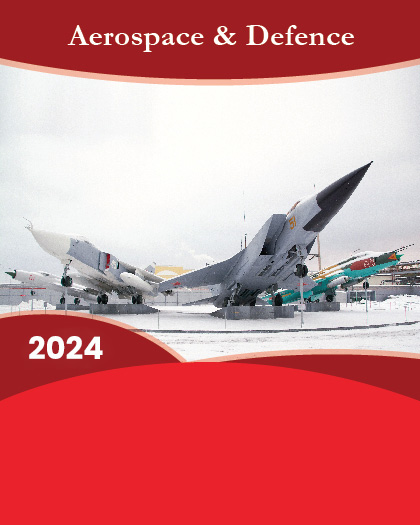1. Research Framework
1.1. Research Objective
1.2. Product Overview
1.3. Market Segmentation
2. Executive Summary
3. Global Artificial Intelligence (AI) in Supply Chain and Logistics Market Insights
3.1. Industry Value Chain Analysis
3.2. DROC Analysis
3.2.1. Growth Drivers
3.2.1.1. Increasing demand for efficiency and optimization
3.2.1.2. Growing adoption of cloud computing and big data
3.2.1.3. Need for improved visibility and transparency
3.2.1.4. Rising labor costs
3.2.2. Restraints
3.2.2.1. High upfront costs
3.2.2.2. Ethical considerations and bias
3.2.3. Opportunities
3.2.3.1. Increasing focus on sustainability
3.2.3.2. Advancement in technology
3.2.4. Challenges
3.2.4.1. Data security and privacy concerns
3.2.4.2. Integration with existing infrastructure
3.3. Technological Advancements/Recent Developments
3.4. Regulatory Framework
3.5. Porter's Five Forces Analysis
3.5.1. Bargaining Power of Suppliers
3.5.2. Bargaining Power of Buyers
3.5.3. Threat of New Entrants
3.5.4. Threat of Substitutes
3.5.5. Intensity of Rivalry
4. Global Artificial Intelligence (AI) in Supply Chain and Logistics Market Marketing Strategies
5. Global Artificial Intelligence (AI) in Supply Chain and Logistics Market Overview
5.1. Market Size & Forecast, 2019-2030
5.1.1. By Value (USD Billion)
5.2. Market Share & Forecast
5.2.1. By Type
5.2.1.1. Arti?cial Neural Networks
5.2.1.2. Machine Learning
5.2.1.3. Other
5.2.2. By Application
5.2.2.1. Inventory Control and Planning
5.2.2.2. Transportation Network Design
5.2.2.3. Purchasing and Supply Management
5.2.2.4. Demand Planning and Forecasting
5.2.2.5. Others
5.2.3. By Region
5.2.3.1. North America
5.2.3.2. Europe
5.2.3.3. Asia Pacific (APAC)
5.2.3.4. Latin America (LATAM)
5.2.3.5. Middle East and Africa (MEA)
6. North America Artificial Intelligence (AI) in Supply Chain and Logistics Market
6.1. Market Size & Forecast, 2019-2030
6.1.1. By Value (USD Billion)
6.2. Market Share & Forecast
6.2.1. By Type
6.2.2. By Application
6.2.3. By Country
6.2.3.1. United States
6.2.3.1.1. By Type
6.2.3.1.2. By Application
6.2.3.2. Canada
6.2.3.2.1. By Type
6.2.3.2.2. By Application
7. Europe Artificial Intelligence (AI) in Supply Chain and Logistics Market
7.1. Market Size & Forecast, 2019-2030
7.1.1. By Value (USD Billion)
7.2. Market Share & Forecast
7.2.1. By Type
7.2.2. By Application
7.2.3. By Country
7.2.3.1. Germany
7.2.3.1.1. By Type
7.2.3.1.2. By Application
7.2.3.2. United Kingdom
7.2.3.2.1. By Type
7.2.3.2.2. By Application
7.2.3.3. Italy
7.2.3.3.1. By Type
7.2.3.3.2. By Application
7.2.3.4. France
7.2.3.4.1. By Type
7.2.3.4.2. By Application
7.2.3.5. Spain
7.2.3.5.1. By Type
7.2.3.5.2. By Application
7.2.3.6. Belgium
7.2.3.6.1. By Type
7.2.3.6.2. By Application
7.2.3.7. Russia
7.2.3.7.1. By Type
7.2.3.7.2. By Application
7.2.3.7.3.
7.2.3.8. The Netherlands
7.2.3.8.1. By Type
7.2.3.8.2. By Application
7.2.3.9. Rest of Europe
7.2.3.9.1. By Type
7.2.3.9.2. By Application
8. Asia Pacific Artificial Intelligence (AI) in Supply Chain and Logistics Market
8.1. Market Size & Forecast, 2019-2030
8.1.1. By Value (USD Billion)
8.2. Market Share & Forecast
8.2.1. By Type
8.2.2. By Application
8.2.3. By Country
8.2.3.1. China
8.2.3.1.1. By Type
8.2.3.1.2. By Application
8.2.3.2. India
8.2.3.2.1. By Type
8.2.3.2.2. By Application
8.2.3.3. Japan
8.2.3.3.1. By Type
8.2.3.3.2. By Application
8.2.3.4. South Korea
8.2.3.4.1. By Type
8.2.3.4.2. By Application
8.2.3.5. Australia & New Zealand
8.2.3.5.1. By Type
8.2.3.5.2. By Application
8.2.3.6. Indonesia
8.2.3.6.1. By Type
8.2.3.6.2. By Application
8.2.3.7. Malaysia
8.2.3.7.1. By Type
8.2.3.7.2. By Application
8.2.3.8. Singapore
8.2.3.8.1. By Type
8.2.3.8.2. By Application
8.2.3.9. Vietnam
8.2.3.9.1. By Type
8.2.3.9.2. By Application
8.2.3.10. Rest of APAC
8.2.3.10.1. By Type
8.2.3.10.2. By Application
9. Latin America Artificial Intelligence (AI) in Supply Chain and Logistics Market
9.1. Market Size & Forecast, 2019-2030
9.1.1. By Value (USD Billion)
9.2. Market Share & Forecast
9.2.1. By Type
9.2.2. By Application
9.2.3. By Country
9.2.3.1. Brazil
9.2.3.1.1. By Type
9.2.3.1.2. By Application
9.2.3.2. Mexico
9.2.3.2.1. By Type
9.2.3.2.2. By Application
9.2.3.3. Argentina
9.2.3.3.1. By Type
9.2.3.3.2. By Application
9.2.3.4. Peru
9.2.3.4.1. By Type
9.2.3.4.2. By Application
9.2.3.5. Rest of LATAM
9.2.3.5.1. By Type
9.2.3.5.2. By Application
10. Middle East & Africa Artificial Intelligence (AI) in Supply Chain and Logistics Market
10.1. Market Size & Forecast, 2019-2030
10.1.1. By Value (USD Billion)
10.2. Market Share & Forecast
10.2.1. By Type
10.2.2. By Application
10.2.3. By Country
10.2.3.1. Saudi Arabia
10.2.3.1.1. By Type
10.2.3.1.2. By Application
10.2.3.2. UAE
10.2.3.2.1. By Type
10.2.3.2.2. By Application
10.2.3.3. Qatar
10.2.3.3.1. By Type
10.2.3.3.2. By Application
10.2.3.4. Kuwait
10.2.3.4.1. By Type
10.2.3.4.2. By Application
10.2.3.5. South Africa
10.2.3.5.1. By Type
10.2.3.5.2. By Application
10.2.3.6. Nigeria
10.2.3.6.1. By Type
10.2.3.6.2. By Application
10.2.3.7. Algeria
10.2.3.7.1. By Type
10.2.3.7.2. By Application
10.2.3.8. Rest of MEA
10.2.3.8.1. By Type
10.2.3.8.2. By Application
11. Competitive Landscape
11.1. List of Key Players and Their Offerings
11.2. Global Artificial Intelligence (AI) in Supply Chain and Logistics Company Market Share Analysis, 2023
11.3. Competitive Benchmarking, By Operating Parameters
11.4. Key Strategic Developments (Mergers, Acquisitions, Partnerships, etc.)
12. Impact of Escalating Geopolitical Tensions on Global Artificial Intelligence (AI) in Supply Chain and Logistics Market
13. Company Profiles (Company Overview, Financial Matrix, Competitive Landscape, Key Personnel, Key Competitors, Contact Address, Strategic Outlook, and SWOT Analysis)
13.1. Echo Global Logistics
13.2. LivePerson
13.3. Infor
13.4. Covariant
13.5. Zebra Technologies
13.6. HAVI
13.7. C3 AI
13.8. Symbotic
13.9. IBM
13.10. Amazon Web Services Inc
13.11. SAP
13.12. Microsoft Corporation
13.13. Other Prominent Players
14. Key Strategic Recommendations
15. Research Methodology
15.1. Qualitative Research
15.1.1. Primary & Secondary Research
15.2. Quantitative Research
15.3. Market Breakdown & Data Triangulation
15.3.1. Secondary Research?
15.3.2. Primary Research
15.4. Breakdown of Primary Research Respondents, By Region
15.5. Assumptions & Limitations























